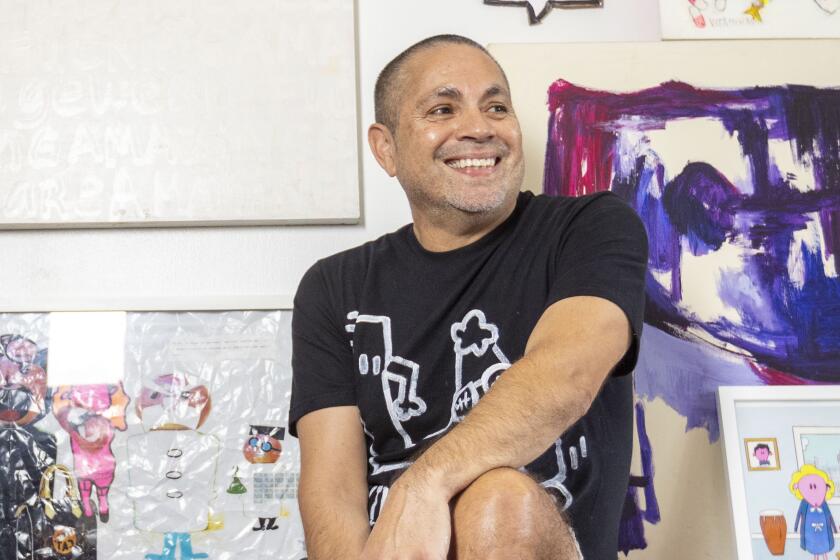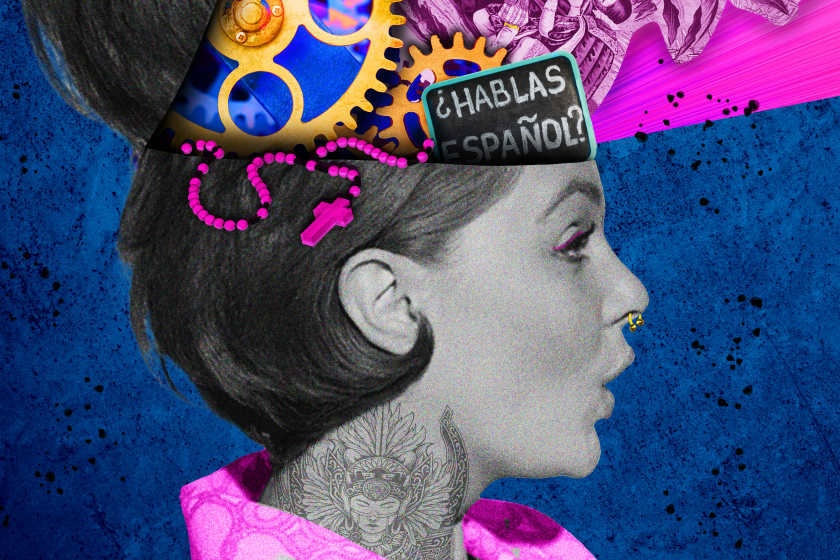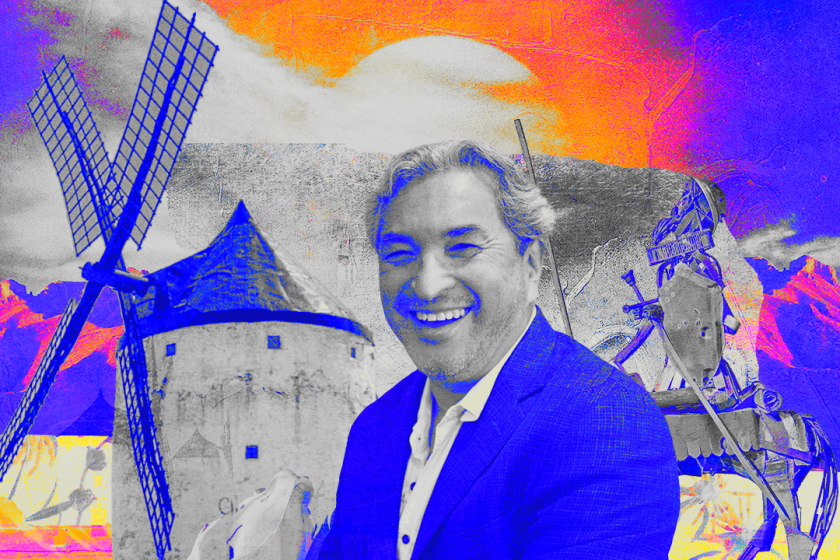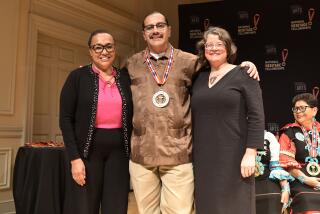From Homeboy Industries to the Italian Renaissance: Fabian Debora wants you to see the light
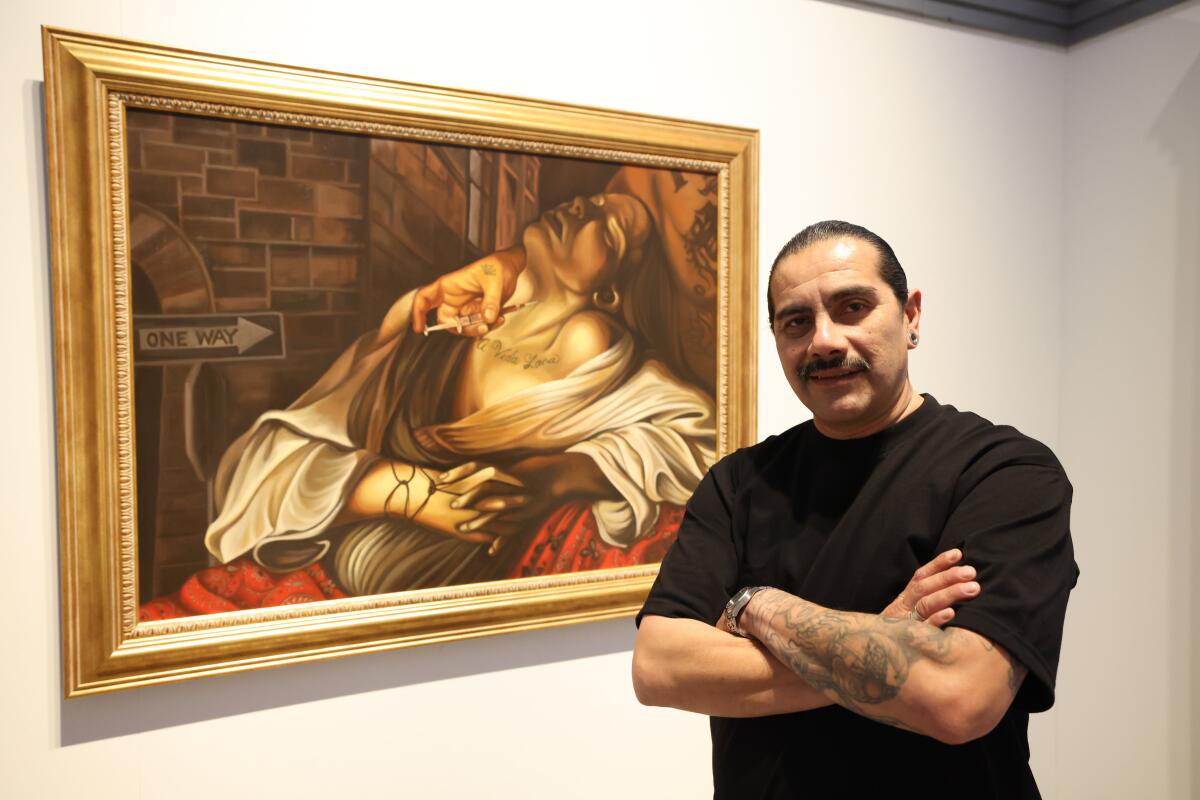
A young girl from Lincoln Heights stands in as the Madonna. Angels visit cholos under street lights. A masked Indigenous warrior presents himself to an incredulous saint who pokes a finger into his side, much like the biblical scene of Christ after his resurrection.
These are the scenes from Fabian Debora’s latest paintings inspired by Renaissance artist Caravaggio in a series titled “Cara de Vago,” which will be on display at the Forest Lawn Museum through March 17.
Ricky Sencion found self-acceptance and liberation through pink sheep. He plasters them across the city in hopes of bringing ‘little expressions of joy’ to Angelenos.
While the Italian master depicted commoners lighted by candlelight, Debora’s work illuminates the type of people he grew up with in the Aliso Village housing projects in Boyle Heights.
“From darkness comes light, right?” Debora says. “That’s also in conjunction with my life and that’s where spirituality lives.”
Debora, 48, found God and sobriety in 2006 after his third suicide attempt. He saw the light while running across the 5 Freeway near his mother’s house while high on drugs.
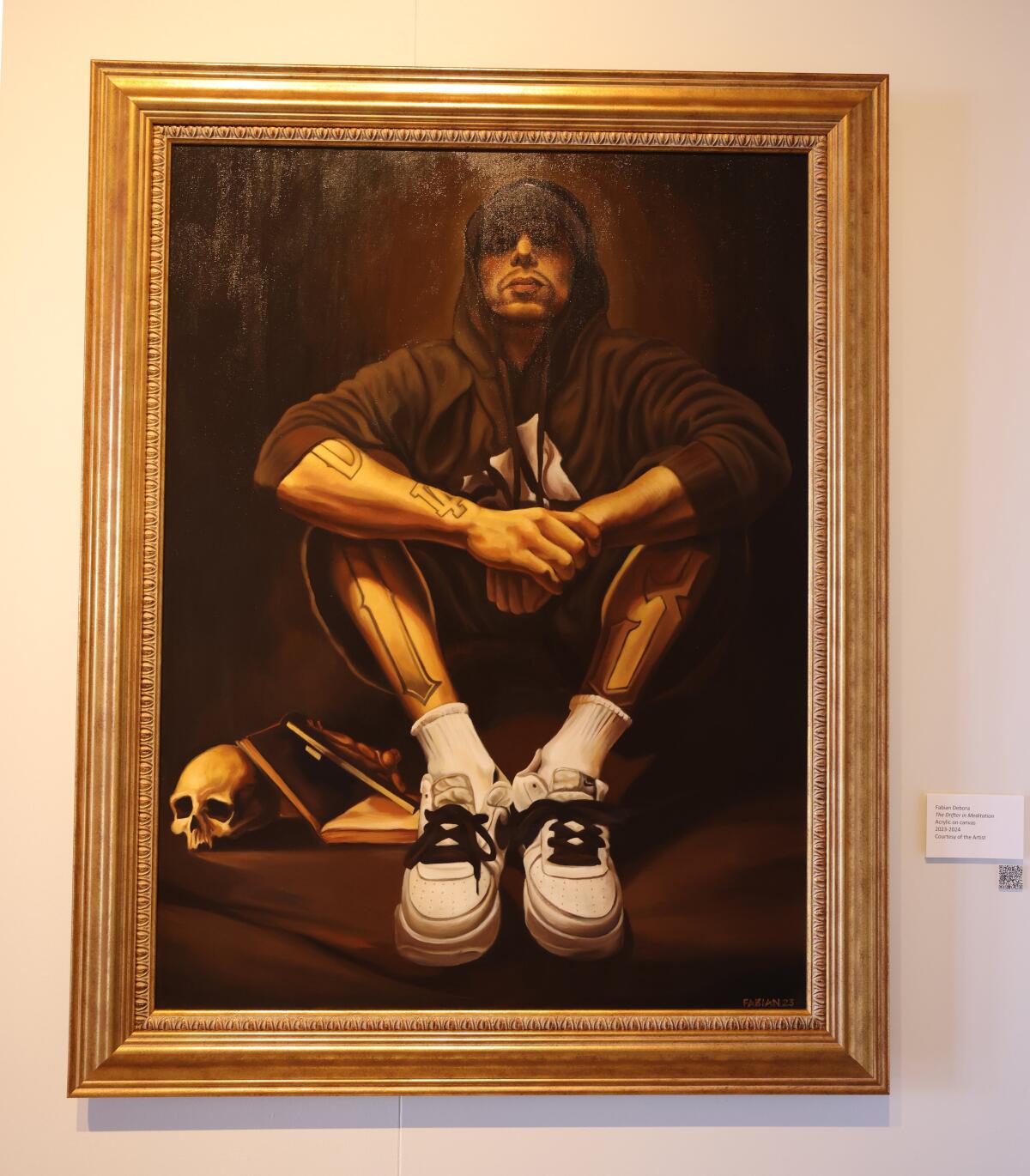
Having survived crossing the busy highway, he entered a drug rehabilitation program the following day and took a job answering phones at Homeboy Industries. He then became a state certified substance-abuse counselor.
Debora went on to co-found the Homeboy Art Academy in 2018, a trauma-informed arts center that he sees as a lifeline to young people. As a former gang member and son of Mexican immigrants, Debora proudly explains that he found salvation after a long journey that seemed to end right where it started.
In the eighth grade at Dolores Mission Catholic School in Boyle Heights, Debora threw a desk after a teacher tore his artwork in front of his classmates. The teacher fainted and fell to the ground. Before he was expelled, Debora was taken by the principal to meet a young Jesuit priest at the nearby church who often helped troubled Latino youth in the neighborhood.
Long before Father Gregory Boyle founded Homeboy Industries, he focused on helping young people with anger that stemmed from trauma at home and in their communities.
In this issue of De Los Reads, we explore six books that pave the way for a more inclusive and authentic expression of our Latino identities.
Standing before Boyle, Debora explained that no one would take away his art. That’s when Boyle disarmed him with a simple request.
“He asked me to draw him something,” Debora says. “It was the first time somebody recognized my art.”
Debora viewed the assignment as a Rorschach test and planned to draw a sunny picture of a man on a beach, but then realized this was his chance to illustrate his world. He drew men with their hands on the back of their heads and police helicopters in the sky.
“That’s when the Aliso projects came out,” he recalls.
Debora drew in notebooks at school, at home under his mother’s coffee table and in tags on the concrete channels of the Los Angeles River and across multiple schools where he was kicked out for fighting.
When Debora’s father arrived in Los Angeles from El Paso, he wanted to work in construction, but ended up smuggling and selling drugs to support his family. He eventually became a drug addict and was incarcerated. Debora moved to Los Angeles when he was 5 and his father affectionately called him “mi rey.”
Without his father, Debora felt a lack of identity and gravitated toward joining a gang.
“It was the worst mistake of my life,” he says.
People in his neighborhood, and especially his mother, would often tell him, “Tienes talento. No le tires. No seas menso.”
In 1994, Boyle intervened again. Debora was facing a three-year sentence in a juvenile work camp. Boyle convinced a Los Angeles Superior Court judge to place the boy in a program with the East Los Streetscapers, an artist collective that started after the Chicano Moratorium in the 1970s and morphed into the Palmetto Gallery.
“Fabian was a very quiet young man. He didn’t brag or talk about his troubles like lots of folks do,” gallery co-founder Wayne Healy recalls. “It feels good to give someone a chance to shine, and they do. I feel honored that Father Greg sent him to us.”
Debora remembers Healy being a little bit more blunt: “He told me, ‘We’ll take him, Father Greg. But three things, kid: Don’t give me s—, don’t give me s— and don’t give me s—.’ ”
How do you adapt ‘Don Quixote’? According to playwright Octavio Solis, by drawing inspiration from El Paso
Octavio Solis had taken on an impossible task. Could he, the mighty Mexican American playwright from El Paso, adapt Miguel de Cervantes’ ‘Don Quixote’?
Eventually, Healy asked Debora to join him and a crew of artists to paint a mural on a chapel at the Central Juvenile Hall, which felt uncanny to the boy, because he previously served time at the facility.
He went on to win an art competition with his drawing of a clown, which was displayed in Washington, D.C., near the Capitol. Then he was sent to Rome to work on a mural arranged by Boyle.
At 18, Debora toured the Vatican and encountered art from the Renaissance and Baroque periods for the first time. The Italian masters’ depiction of dramatic gestures seemed to cut through the fabric of time.
“I was just in awe,” Debora said. “It robbed me of my spirit.”
He didn’t know it then, but that trip laid the germ of an idea that European aesthetics were brilliant, but did not tell his own story.
Despite his success as an artist, Debora was still a drug addict and still in a gang.
He now has the emotional maturity to recognize that he was hurting from the abuse his father inflicted on his family. The only community he could find was through gang life. He was a father to four children at the time. That’s when he ran across the freeway, but walked away with a new purpose in life.
“It wasn’t until I had my third suicide attempt and near-death experience that I recognized that there is such thing as we consider creator or God,” Debora said.
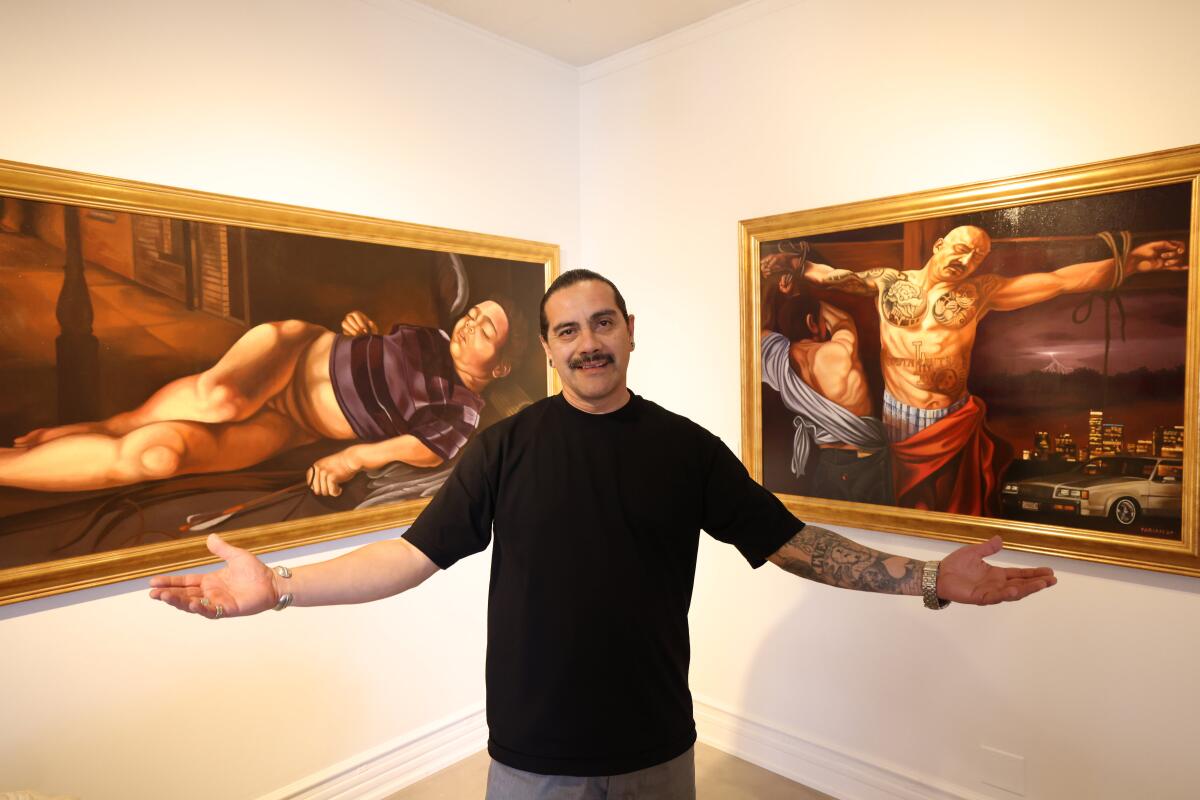
Over the years, Debora’s art shifted from folkloric to hyper realism after learning color theory from artist Vincent Valdez. During the pandemic lockdown, he felt the need to prove himself by depicting scenes from his life interspersed in the style of Caravaggio.
He thought that high-end galleries and museums would have to pay attention to his work if he referenced the Renaissance.
“By utilizing the form of Baroque and Renaissance style art — then I can get your attention. And now that I have your attention, let’s begin the conversation,” Debora said.
“I think that what’s really important is he’s not so much copying these masters, but working alongside them,” associate art history teaching professor Hector Reyes at USC said. “Fabian is really good at taking the strategies of the street and his own familiarity with street life and translating that into a kind of rhetorical device that really grabs your attention and pulls you in.”
Art curator Vida Patricia Rodriguez finds Debora’s reverence and faith for the people deemed outcasts as endearing and part of the reason why his art resonates with Latinos and non-Latinos alike.
“He has a very strong commitment to restoring the humanity within the people of his community and the subculture in which he grew up in,” Rodriguez said.
On a recent afternoon at the academy in East Los Angeles, Debora is surrounded by young people exploring their creative boundaries. They view him as an elder who hit rock bottom, but soared back into success.
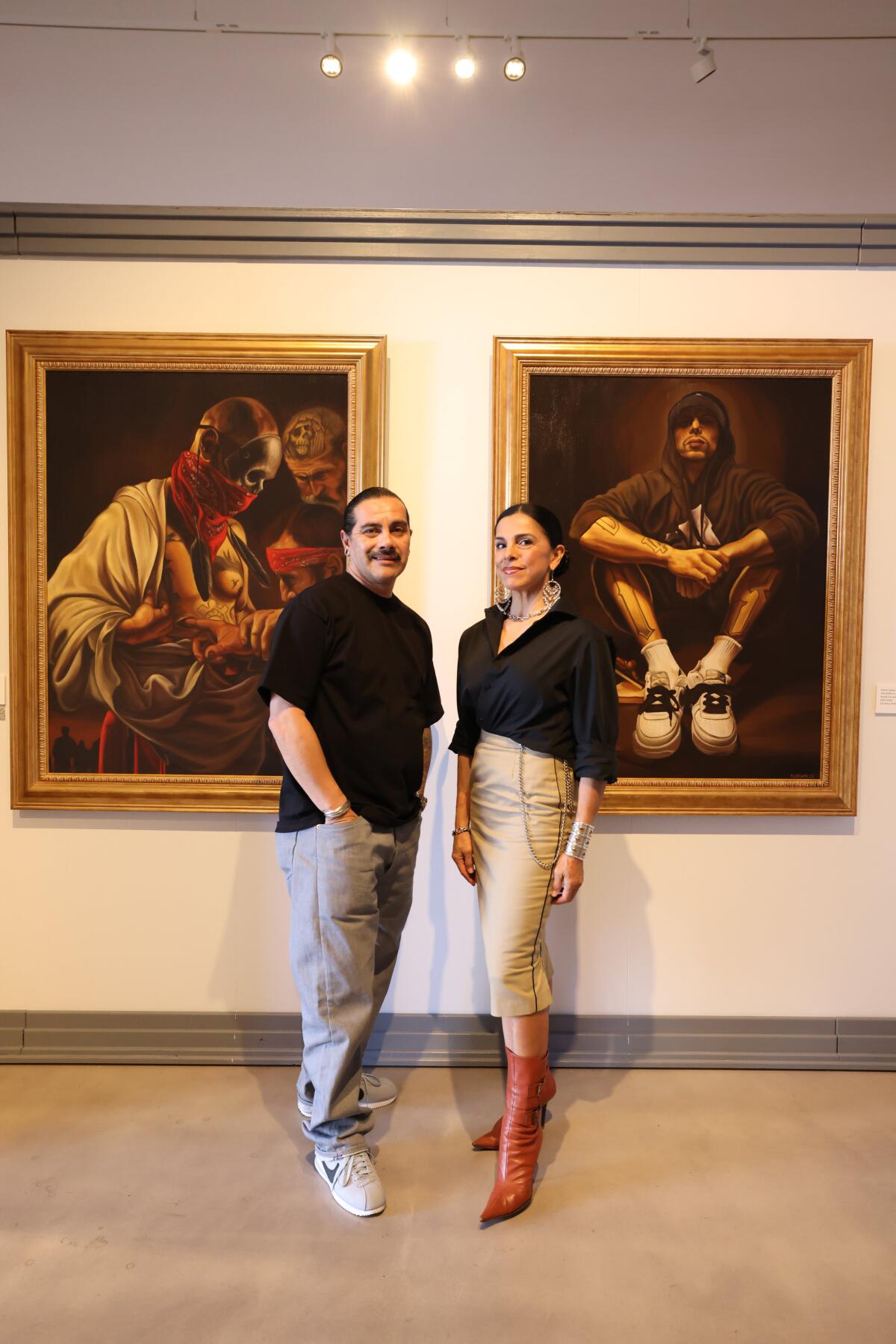
Savannah Gonzalez, 19, from Lincoln Heights posed as Madonna for Debora’s painting “Madonna of the Rosary.” Gonzalez can relate to Debora’s story about growing up in a neighborhood with gang violence and substance abuse.
At the “Cara de Vago” gallery opening earlier this month, Gonzalez recognized that the exhibit on the Forest Lawn funeral grounds was not too far from where her friend Joseph Bustillo Reyes was buried.
“He was killed by the gang violence and it wasn’t fair. He was 16 and I just lost him,” Gonzalez says. “But he was so close to us at the exhibit. It felt like he was there with us.”
She feels that Debora and the academy helped her realize the power of art.
“He broadened my horizons on what I can do in so many ways,” she says.
Also visiting the academy that day is Debora’s son, Fabian Debora Jr. In a back room, Debora carried a pair of young eagle feathers and a container with burning sage to cleanse his son.
The 24-year-old man is nowhere near as lost as his his father was at that age, but he’s still getting into trouble, Debora said. During the cleansing, Debora repeats several prayers as he taps his son with the feathers. He says that whatever he did as a young man shouldn’t come back to haunt his son.
Debora tells his son with a quiet desperation in his voice, “I love you and I want you to come home.”
His son answers, “I love you, Pop.”
More to Read
Sign up for Essential California
The most important California stories and recommendations in your inbox every morning.
You may occasionally receive promotional content from the Los Angeles Times.
